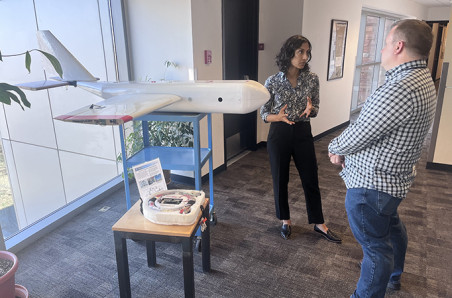
Photo courtesy of USDA
Increasing transparency, boosting competition, and supporting innovation can deliver better choices for farmers in the seed marketplace
The President outlined a multi-point plan to increase competition in the seed and agriculture space in his July 2021 Executive Order on Promoting Competition in the American Economy.
Included in that plan is a call for the U.S. Department of Agriculture (USDA), in consultation with the U.S. Patent and Trademark Office (USPTO), to submit a report to the White House Competition Council on relevant concerns and strategies to help ensure “that the intellectual property system, while incentivizing innovation, does not also unnecessarily reduce competition in seed and other input markets.”
The Biden-Harris Administration, including the USDA and the USPTO, recognizes the importance of innovations in the seed and agricultural space, including ones that will mitigate climate-related disruptions to our food and agricultural systems. With more choices, and plant varieties tailored to local circumstances, farmers may gain potential revenue. In addition, diversifying variety development and production of seeds and other planting stock will make supply chains less vulnerable to disruption, give incentives to new market entrants to compete, and establish a fairer and more competitive market.
The investment in innovation in the seed and agriculture industry is made possible in part due to our intellectual property (IP) laws. The foundations of these laws were written into the U.S. Constitution by our nation's founders, and innovators can utilize patents and plant variety protection to recoup and benefit from their investments during the limited terms provided. Indeed, USDA started its life as the then Patent Office's Division of Agriculture, which for the first decades of our country distributed free seeds to farmers to promote agricultural production. Seeds were recognized over time as part of the IP system through the Plant Variety Protection Act of 1970 and more recently through a series of court cases that recognized the availability of utility patents for seeds.
Today, the IP system affecting seeds is diverse and robust. For example, the Plant Variety Protection Act permits farmers to save seeds for their own use and permits plant breeders to conduct research to develop the next variety. Our patent laws also allow for and encourage the disclosure of inventions, and for others to build on those innovations. These delicate sets of balances aim to reward and incentivize those who do the work to create original innovation, as well as protecting the public interest in continued innovation and fair competition.
But more must be done to ensure that the IP system addresses the needs of agriculture today. While reliable IP protection can incentivize seed and agricultural innovations, our patent system must not be used to unnecessarily reduce competition beyond what is reasonably contemplated by the law.
To further the objectives of President Biden's Executive Order, the USDA recently completed its report in consultation with the USPTO Director, and the two agencies exchanged letters in March 2023 (and again in January 2025), outlining numerous initiatives they will undertake to execute the President's agenda. Under a newly established USDA-USPTO Working Group on Competition and Intellectual Property, these initiatives will strengthen our relationship and expand the resources available for assessing patentability and addressing instances of patents being used to unnecessarily reduce competition.
The joint initiatives of the new working group include:
- Exploring joint USPTO-USDA opportunities for collecting broader stakeholder input from researchers, plant breeders, farmers, and others in the seed and agricultural input markets;
- Exploring initiatives to enhance the quality of the patent examination process for innovations related to agricultural products and processes, including opportunities for enhancing prior art search capabilities and providing additional training and guidance to patent examiners;
- Collaborating on initiatives that enhance the transparency of IP information for agriculture-related innovations and assess availability and viability of patented and off-patented germplasm; and
- Considering and evaluating new proposals for incentivizing and protecting innovation in the seed and agricultural-related space, including the broader adoption of research or plant breeders' exemptions when U.S. utility patents cover seeds.
The USPTO is eager to work with USDA's new Farmer Seed Liaison to facilitate greater interaction between the agricultural sector and the IP system. The USPTO and the USDA will further collaborate to develop policies aimed at protecting and promoting U.S. innovation in the seed and agriculture space while advancing competition that will support farmers and supply chain resilience.
We invite the public to participate in this process through upcoming outreach events and listening sessions, and we look forward to hearing a diversity of views on these important topics.
For more information on the Biden Administration's initiative in the seed space, please go to the USDA's seed competition website.
Engage with the Director and join the conversation on our social media channels.






